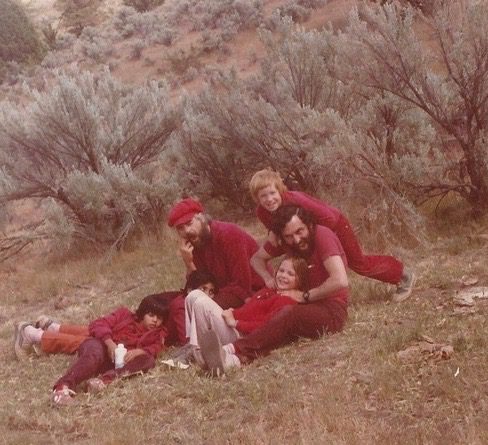“Balanced,” is the word I keep hearing in reference to the new Netflix documentary series, Wild Wild Country, about the improbable rise and fall of the Rajneesh cult in Oregon. I suppose if balanced means two sides represent a story, then it is balanced. But I don’t believe that there are only two sides to this or most stories.
Wild Wild Country very flatly tells the outlandish tale of a guru and his followers and their takeover of a tiny town in rural central Oregon in the 1980s. Rajneeshpuram was the commune I lived in during my childhood and early teenage years. The directors, Maclain and Chapman Way, got their hands on hundreds of hours of news footage, pieced it together with interviews, and set it to dramatic mood music.
My father was a history professor before giving it all up to go live on the Rajneesh commune. With his eyes alight, he told me many times that history must come alive. “Learning about people and places is boring, unless you can live the history, really feel it.” He used to take his students to the cemetery and research the people buried there so that they could feel what it was like to live in the times they were studying. Not content to reveal history to his students as a recitation of facts and figures, he brought his students back in time to bring it alive. This created a depth of understanding rarely found in true storytelling.
A good documentary is captivating entertainment. A true-life movie. An immersion in a lifestyle outside our experience or a revelation of material presented in a new and exciting way.
What separates Wild Wild Country from being a mere splicing together of media footage are the interviews. The directors interviewed the former leaders of the commune, Sheela and Shanti B., members of the upper echelons, a group of women we referred to as Moms. They interviewed Niren, Bhagwan Shree Rajneesh, and Sheela’s attorney. And they interviewed local ranchers, the people that wanted to rid the world of us, using the term “Better Dead Than Red,” repurposing an old anti-communist slogan to apply to us, the red-clad intruders.
Full disclosure: I have feelings about Shanti B., which are explained in “My End of the World at Rajneeshpuram,” an essay I wrote for The Rumpus last year. In short, Shanti B. issued a thinly veiled threat against my father’s life to me so that I would behave. I was nine. I never told anyone about it while we were still at the Ranch, because I assumed that doing so would make it come true. I didn’t tell anyone about for a long time afterwards, because as I grew up, the memory of it was so shocking, I couldn’t believe it ever actually happened. I maintained a seed of doubt about the incident even when I wrote about it in the essay and for my memoir. One thing I can thank the Ways’s documentary for is that it supports everything I recall experiencing as a child, lending credibility to the stories I remember and tell.
Sheela, Bhagwan Shree Rajneesh’s personal secretary and the public face of our organization, is interviewed from the nursing home that she runs in Switzerland. She tells stories of murder plots and mass poisonings from within the sanctuary of her love for Rajneesh. Instead of being presented as a two-dimensional villainous character, she comes off as an unworldly ingénue who was deeply in love with and inspired by a charismatic leader; everything she did, she did to protect him. Subtly hidden from viewers is the fact that Sheela was sociopath who was given a great deal of power and wielded it, with her outrageous speeches and her very public wheedling and buffoonery. I can only imagine what she would have done with a Twitter account.
Shanti B.’s virtue is delivered by the devotion she felt, first to the Master, Bhagwan, and then to Sheela. A picture is painted of a young innocent, frustrated with her suburban life and difficult marriage. Her naiveté drew her into a twisted web of corruption; she had no control. From behind her doe-like eyes, she describes an episode where she was unwittingly volunteered by Sheela to shoot and kill a government employee. In another instance, she did in fact empty a syringe of poison into the celebrating body of Bhagwan’s physician. She consistently describes a complete lack of agency, coming close to confessing but only from behind the veil of one who has been brainwashed. Perhaps people are so distracted by the honesty of the facts to notice that she does not accept responsibility nor express remorse for her many horrifying actions.
The fact is, the stories are so bizarre, they speak for themselves. Which is what the Ways are counting on. The most glaring problem for me is that the series tells two sides of a complex, character-filled, wondrous story without any depth of feeling or expression of what life was like for those of us who lived there. The deeply moving story of a city that rose up in the desert, was powered by thousands of devotees of a spiritual master, and was quickly driven into the ground by power-hungry tyrants is told through such a narrow lens that all poignancy is lost. It is a cardboard version of what was a rich and true tragicomedy, a lottery scratch ticket representation of a civilization come and gone. The story of Rajneeshpuram is told in a series of events and everything within it is true. But it is not real. It does not come alive.
***
Photographs provided courtesy of author.






